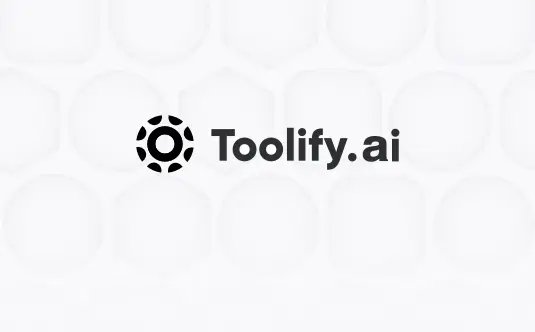Transform sketches into hyper-realistic renders
Enhance various aspects of architectural design
Customize designs and receive smart recommendations
Best 4 ai architecture generator Tools in 2025
ArchiVinci, Architecture Helper, Archsense, AI in AEC Newsletter are the best paid / free ai architecture generator tools.

 39.37%
39.37%
What is ai architecture generator?
An AI architecture generator is a tool that automates the process of designing and creating AI system architectures. It utilizes predefined components, best practices, and design patterns to generate optimized AI architectures tailored to specific use cases and requirements. AI architecture generators aim to streamline the development process and ensure the creation of efficient, scalable, and maintainable AI systems.
What is the top 4 AI tools for ai architecture generator?
Core Features
|
Price
|
How to use
| |
|---|---|---|---|
ArchiVinci | Using ArchiVinci is user-friendly. Simply upload your hand-drawn sketches or input your design preferences, and let the AI tools take over. Customize the generated designs, receive smart recommendations, and visualize your architectural, exterior, interior, or landscape designs with ease. | ||
Architecture Helper | AI-Based Architecture Design Recognition |
Monthly $5 Unlimited Image Generations, Unlimited Building Analyses, Public Profile & Showcase, Track Architecture Stats, New Features Weekly, Save Your Favorites, Cancel Anytime
| Snap and submit a picture to see and explore design and architectural influences |
Archsense | The core features of Archsense include: 1. Accurate architecture representation generated directly from source code. 2. Identification of code dependencies and event-based interactions across projects. 3. Easy proposal and review of new changes within the context of existing architecture. 4. Instant feedback on implementation progress and notification of any issues. | To use Archsense, you need to integrate it with your Continuous Integration (CI) system. Archsense analyzes the codebase across different languages and builds visualization with layers for product architecture. You can then collaborate by creating new building blocks of future features in the context of existing architecture, connecting them to already existing services, and requesting review and feedback. Archsense also tracks the progress by analyzing new code versions, comparing them with proposed changes, and notifying if significant deviations are spotted. | |
AI in AEC Newsletter | Subscribe to the AI in AEC newsletter to receive weekly updates on crucial developments of artificial intelligence related to the industry. |
ai architecture generator Core Features
Automated architecture design based on user input and requirements
Utilization of best practices and design patterns for optimal performance
Integration of predefined components and modules for rapid development
Customization options for fine-tuning generated architectures
Visualization and documentation of the generated AI architectures
What is ai architecture generator can do?
Healthcare: Generating AI architectures for medical diagnosis, drug discovery, and patient monitoring systems.
Finance: Creating AI architectures for fraud detection, risk assessment, and algorithmic trading platforms.
Retail: Developing AI architectures for personalized product recommendations, demand forecasting, and supply chain optimization.
Manufacturing: Designing AI architectures for predictive maintenance, quality control, and production optimization systems.
Transportation: Generating AI architectures for autonomous vehicles, traffic management, and logistics optimization.
ai architecture generator Review
Users praise AI architecture generators for their ability to streamline the AI development process, provide best practices and optimized designs, and offer customization options. Many users report significant time savings and improved system performance after adopting these tools. However, some users mention that generated architectures may require fine-tuning for complex or highly specific use cases, and that some AI knowledge is still beneficial when using these tools.
Who is suitable to use ai architecture generator?
A data scientist uses an AI architecture generator to quickly prototype and evaluate different architectures for a new predictive maintenance system.
A startup founder leverages an AI architecture generator to create a scalable and maintainable architecture for their AI-powered customer service chatbot.
An enterprise IT team employs an AI architecture generator to ensure consistency and best practices across multiple AI projects within the organization.
How does ai architecture generator work?
To use an AI architecture generator, follow these steps: 1. Define your AI system requirements, including the desired functionality, performance metrics, and constraints. 2. Input the requirements into the AI architecture generator interface. 3. Select any additional preferences or customization options offered by the generator. 4. Generate the AI architecture based on the provided input. 5. Review the generated architecture, including its components, connections, and data flow. 6. Refine and iterate on the architecture if necessary, based on feedback and further requirements. 7. Implement the generated AI architecture using the recommended technologies and frameworks.
Advantages of ai architecture generator
Accelerated AI system development by automating the architecture design process
Improved efficiency and performance of AI systems through the use of best practices and optimized designs
Reduced risk of architectural errors and inconsistencies
Enhanced collaboration between team members through standardized architecture documentation
Flexibility to customize and adapt generated architectures to specific needs
FAQ about ai architecture generator
- What is an AI architecture generator?
- How does an AI architecture generator work?
- What are the benefits of using an AI architecture generator?
- Can an AI architecture generator be used for any AI project?
- Do I need to have AI expertise to use an AI architecture generator?
- How customizable are the AI architectures generated by these tools?

